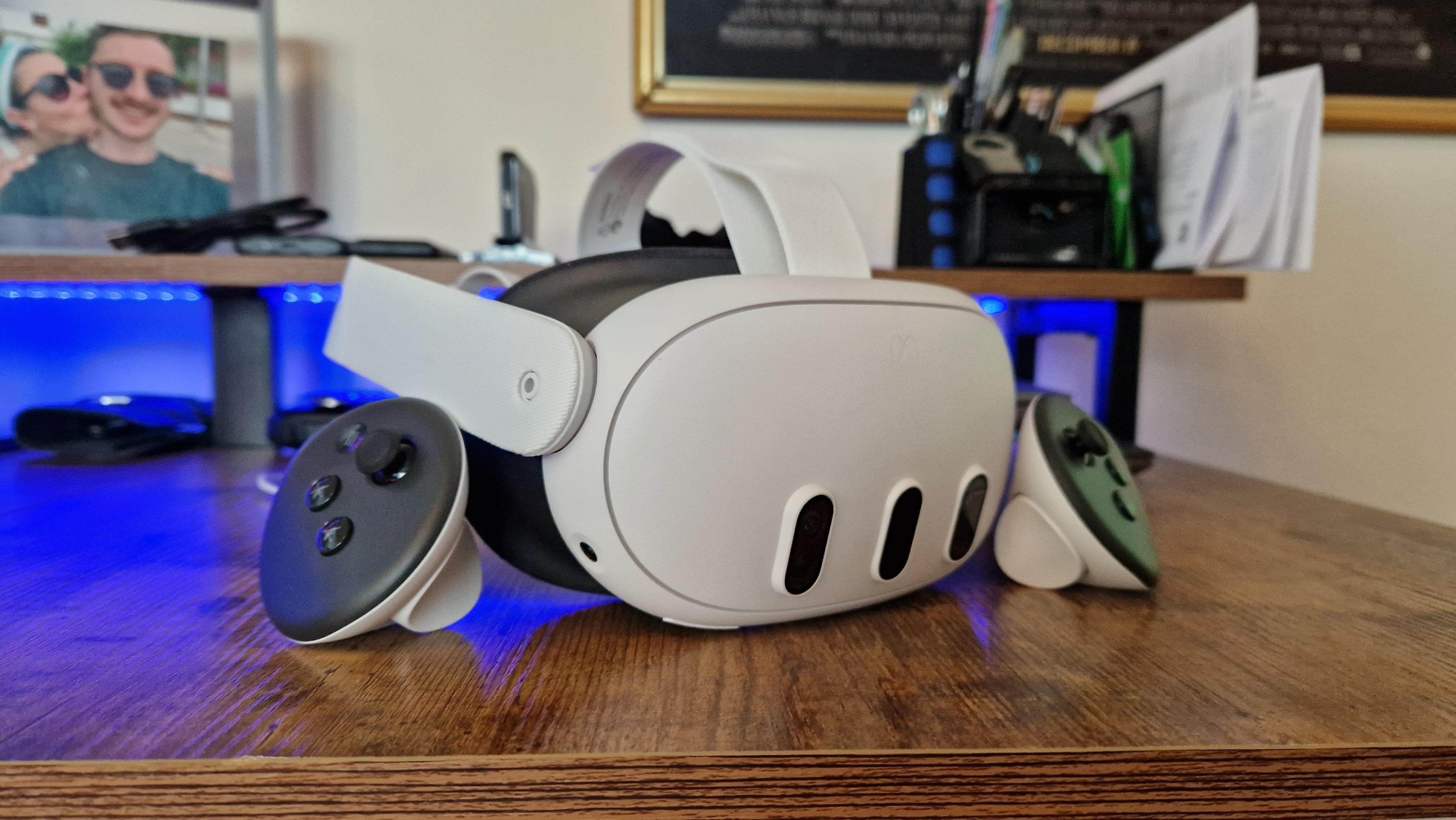GamesRadar+ Verdict
Overall, the Meta Quest 3 takes the excellent gaming chops of the Oculus Quest 2 and gives it a current-gen mixed reality refresh. While it improves on the Quest 2, it does so more in the ways two smartphones feel different from one year to the next. There are noticeable features that make you feel the leaps in technology, but I don't feel the Quest 3 makes the Quest 2 obsolete - in fact, it might even strengthen its place in the market.
Pros
- +
A massive library of games
- +
Excellent sound
- +
Pancake lenses
- +
Passthrough cameras are very clear
- +
You can dodge the Metaverse if you just want to game
Cons
- -
Battery life is just okay
- -
You're beholden to Meta's privacy track record
- -
Controllers don't feel much better than Quest 2
- -
No eye-tracking
Why you can trust GamesRadar+
The Meta Quest 3 feels like the culmination of a massive calendar year for VR. Of course, PSVR2 arrived in February, and while that reaffirmed that this is still an emergent and exceptional way to experience video games, the announcement of the Apple Vision Pro created even more mainstream buzz. Everyone, including your gran, probably saw and got excited about what the Apple Vision Pro could mean for the future.
The Quest 3 very much feels like Meta's response to that excitement. Dare I say it even comes with a hint of spite at Apple for giving Zuck's Metaverse a clean lick of paint and making it seem as though mixed reality was Tim Cook's idea. For gaming and "Spatial Computing", it feels like the Quest 3 will hold an important position among the best VR headsets going forward. Even if it's just for a new wave of VR and MR gaming, it follows on from the extremely popular Quest 2, and the not-so-popular Quest Pro. At $499.99 / £479.99 for 128GB or a beefier $649.99 / £619.99 for 512GB, this headset bridges the high-end feature gap of the Pro while being much more affordable. As a result, the Meta Quest Pro now feels more redundant - who'd have thought that was possible?
As a successor to the Quest 2, however, things are much more interesting. It feels like a generational update, but more in the way a new smartphone feels updated from last year's version. There are noticeable features that make you feel the leaps in technology, but I wouldn't argue the Quest 3 makes the Quest 2 obsolete - in fact, it might even strengthen its place in the market.
One thing I am happy to report given my distrust of Meta as a company, is that my privacy concerns from the Quest Pro feel softened by the Quest 3, so much so that I am happy to recommend this to gamers. Whether or not you should buy this over, or even upgrade from the Meta Quest 2, however, is what the rest of this review will help you decide.
Design
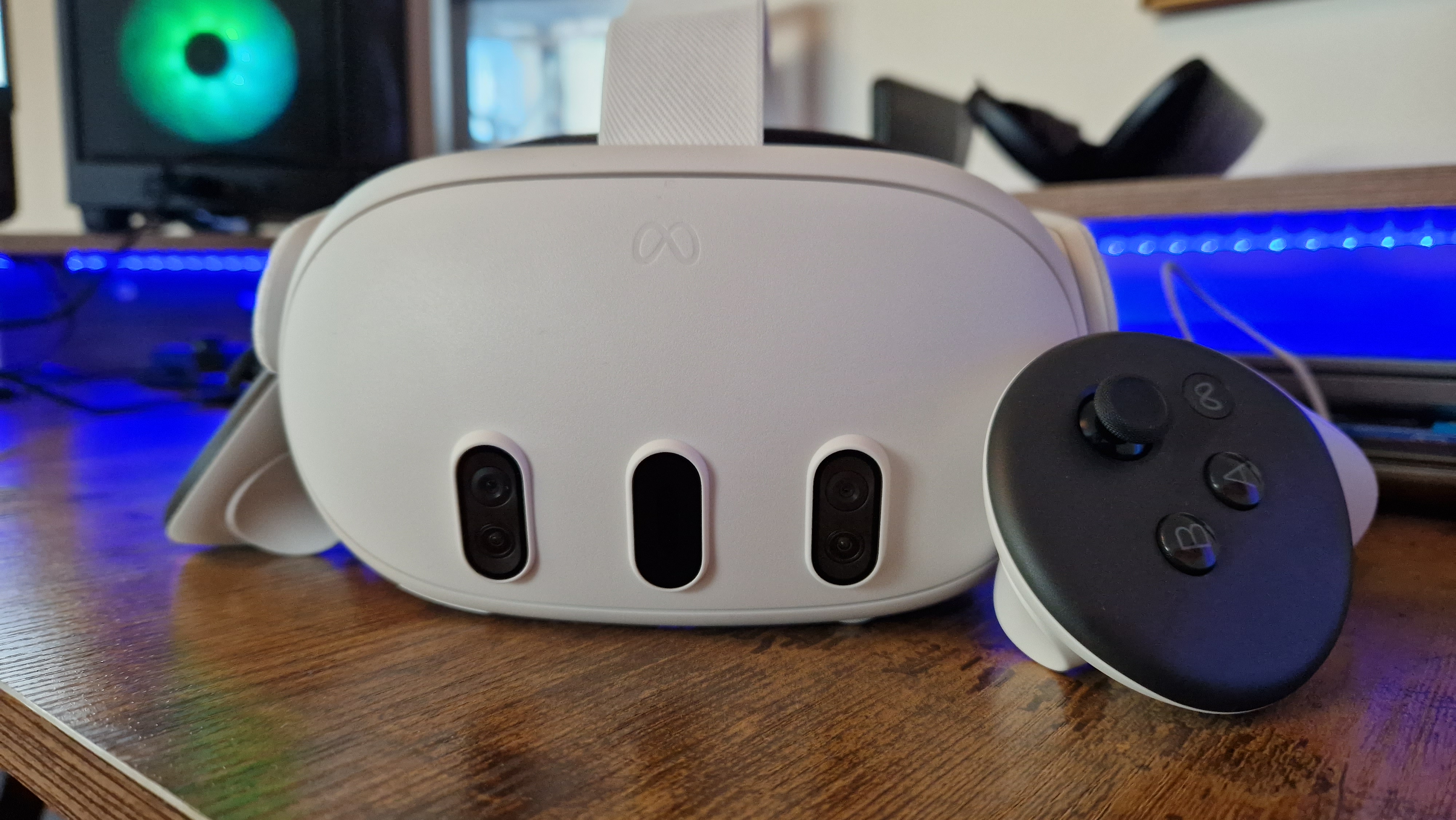
One look at the Quest 3 headset may be enough to sell you. I have to admit, the design of this visor is properly beautiful, and its slim waistline seems almost incomparable to the now bulky-seeming Quest 2. On the face of it, this is an updated and streamlined headset that still manages to share the aesthetic DNA of previous Oculus Quest devices.
Beyond its new face that has three central camera modules, so much of the Quest 3 feels almost identical to the Quest 2. The headstrap is still the same design, its speakers are integrated into its sides, and its facial interface feels mostly unchanged.
In that way, the comfort and fit of both headsets does feel eerily similar. If anything, the Quest 2's face padding might even be more plush - I have a sneaky suspicion that's because Meta understood that the best Meta Quest 2 accessories came from third parties, and it's putting maximum comfort behind the paywall of its larger accessory range this time around.
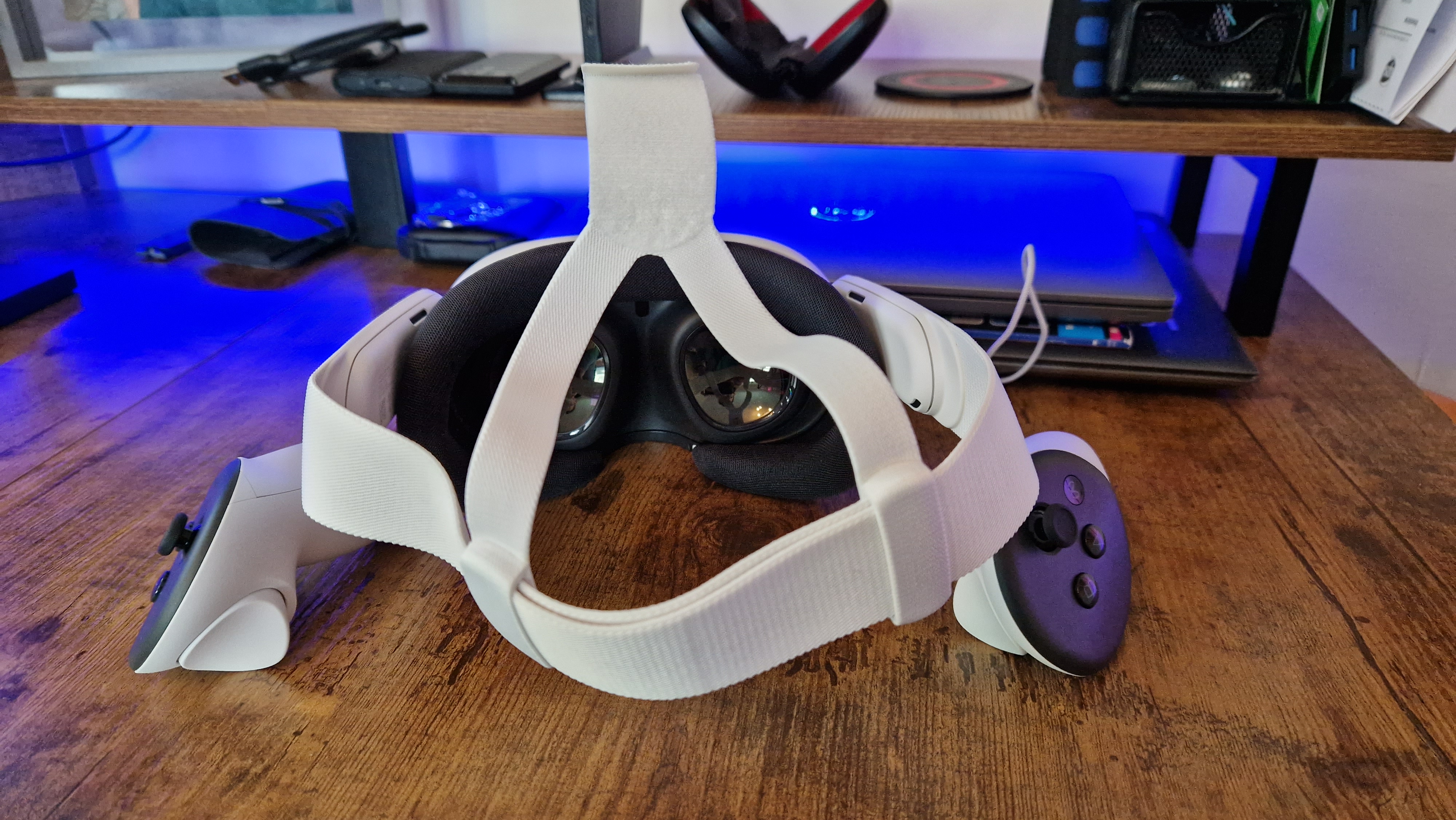
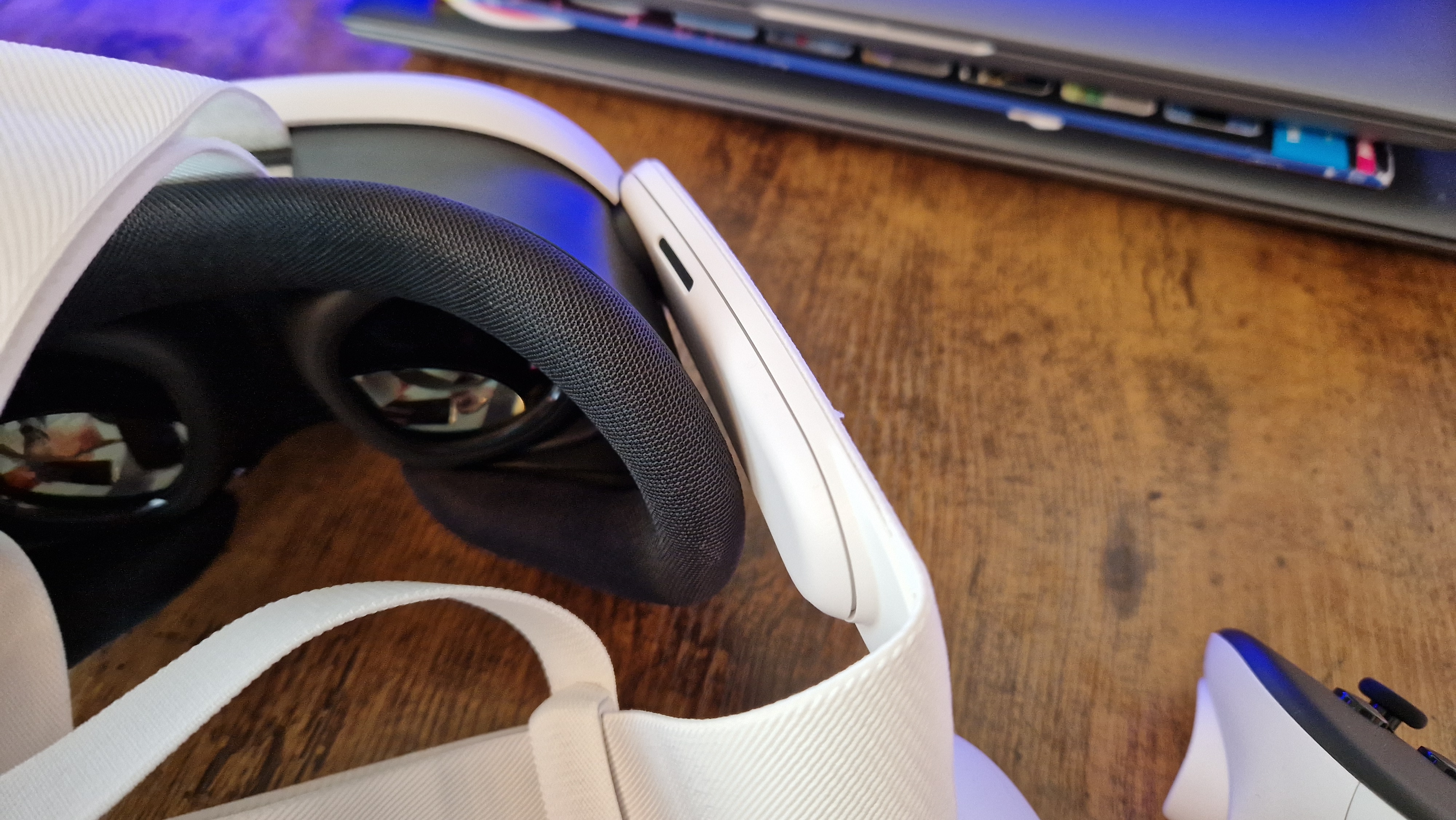
The stock headstrap of the 2023 device is better though. The central over-the-head band adjusts far easier now because the two adjoining loops slide apart or together really nicely. That central headband is still a total pain if you're protective of your hair-do though, so keep that in mind.
The speakers of the Quest 3 are a wee bit thicker than the ones on the Quest 2, and for good reason. A lot of marketing has gone into selling 3D audio with this headset, and we'll get onto how good that is soon. But it does mean you feel more pressure on the sides of your head - particularly if you wear glasses.
On the outer left-hand side of the headband, you have your USB-C connection port for charging which sits just above the power button. On the right, you have a 3.5mm headphone jack where you can connect one of the best gaming headsets.
On the bottom, there is a small turning dial to control inter-pupilary distance, as well as a volume adjustment key, and a magnetic connector for putting the headset on a charging stand.
The controllers look and feel almost identical to their Quest 2 counterparts, even down to the way their buttons press in. Without the tracking rings, they do clack together far less during gameplay, and that feels like an added bonus. Even their wrist straps are almost identical though, and annoyingly, they have that same tendency to come a little loose during more vigorous play sessions.
Features
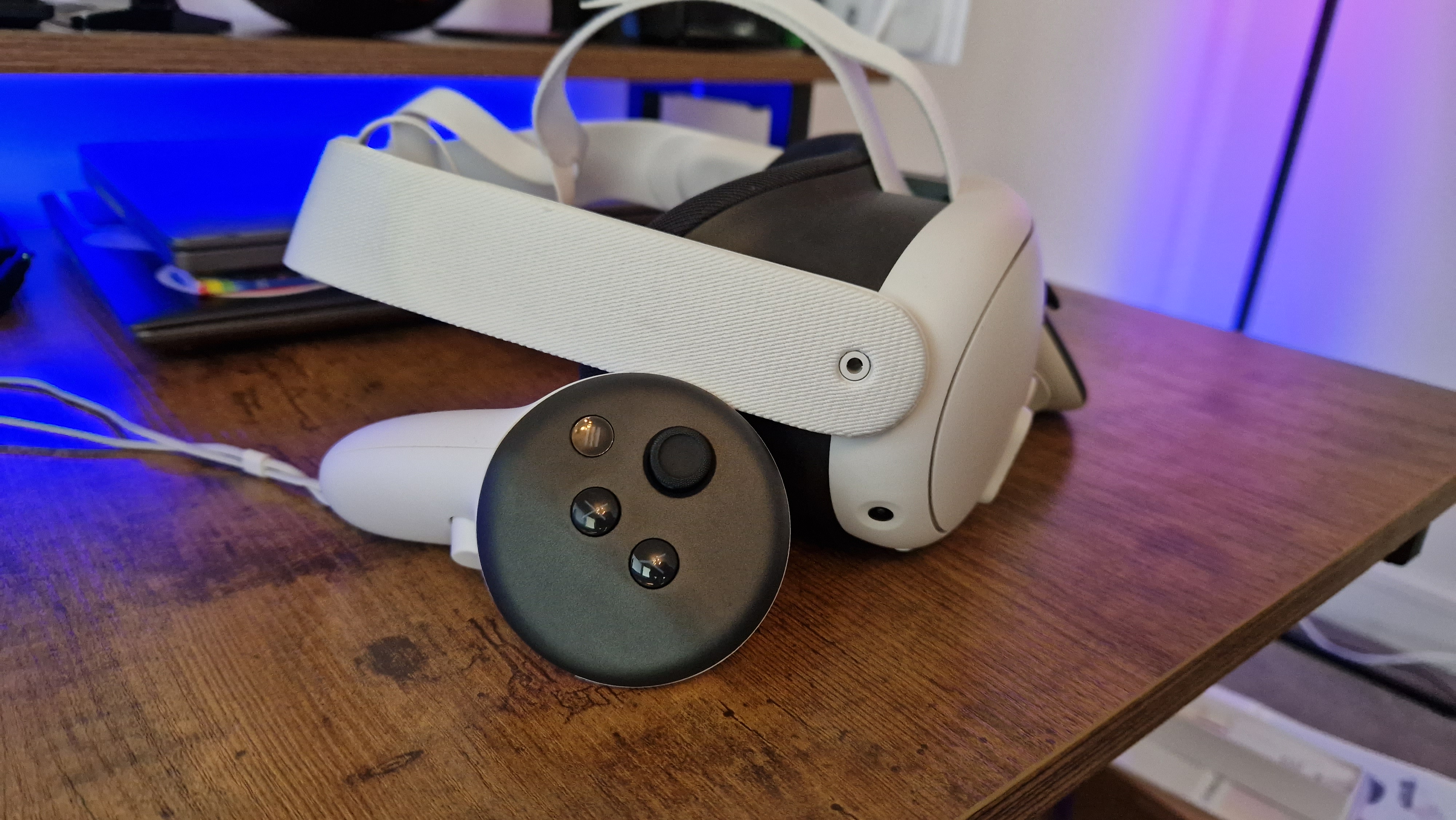
On paper is where you might notice the biggest disparity between the Meta Quest 3 and its predecessors. To me, the biggest standout feature that nets the most tangible benefits to the overall experience is the pancake lenses brought forward from the Quest Pro. These not only increase the focus, but they actually aid the FOV in my opinion, because their shape means I take in the black border of the headset less and my eyes are drawn more to the display in front of me.
FOV is 110 degrees horizontally, which is more than enough for the black border around the screen to not bother you. You don't need to sustain your belief with that FOV, as I found earlier in the year with PSVR 2. Similarly, the 120Hz refresh rate feels smooth. However, it is worth noting that at launch, I didn't come across much that felt like it was making use of that refresh rate. Games and apps from previous Quest headsets all work, but most games seem just as smooth as they did on Quest 2, presumably because any Quest 3 patches will come in the next little while.
| Processor | Snapdragon XR2 Gen 2 |
| Resolution | 2064 x 2208 per eye |
| Refresh rate | 90Hz / 120Hz |
| Field of view | 110 degrees |
| Sensors | RGB cameras, 4 IR cameras |
| Storage | 128GB / 512GB |
| Cameras | 2x RGB 18PPD cameras |
| Audio | Integrated 3D spatial audio speakers |
| RAM | 8GB |
| Weight | 515g |
| Eye tracking | None |
| Battery | Up to 2.2 hours average |
| Connectivity | WiFi 6E |
Running the show is Qualcomm's Snapdragon XR2 Gen 2 processor, which never fails to provide a jank-free experience. Where the Quest 2 can occasionally suffer from stutters in more demanding games, the Quest 3 never has with me.
The resolution of this headset is an interesting one. On paper, the jump from 1,832 x 1,920 per eye on the Quest 2 to 2,064 x 2,208 per eye on the Quest 3 should be noticeable. In truth, colors appear more vivid, and there are definitely fewer jaggy lines, but all in all, resolution per eye didn't wow me as much as I wanted it to. It definitely didn't impress me as much as PSVR 2, and I have a feeling it's because the Quest 3 still uses LCD displays as opposed to PlayStation's OLED.
What did wow me was the clarity of Quest 3's passthrough cameras. As soon as you put the headset on and get a visual of your surroundings you can notice a massive boost in clarity. It helps, too, that these RGB cameras show you full color. These are, without doubt, the best passthrough cameras of any VR device out there, so if you do plan to do lots in mixed reality, you're in for a treat.
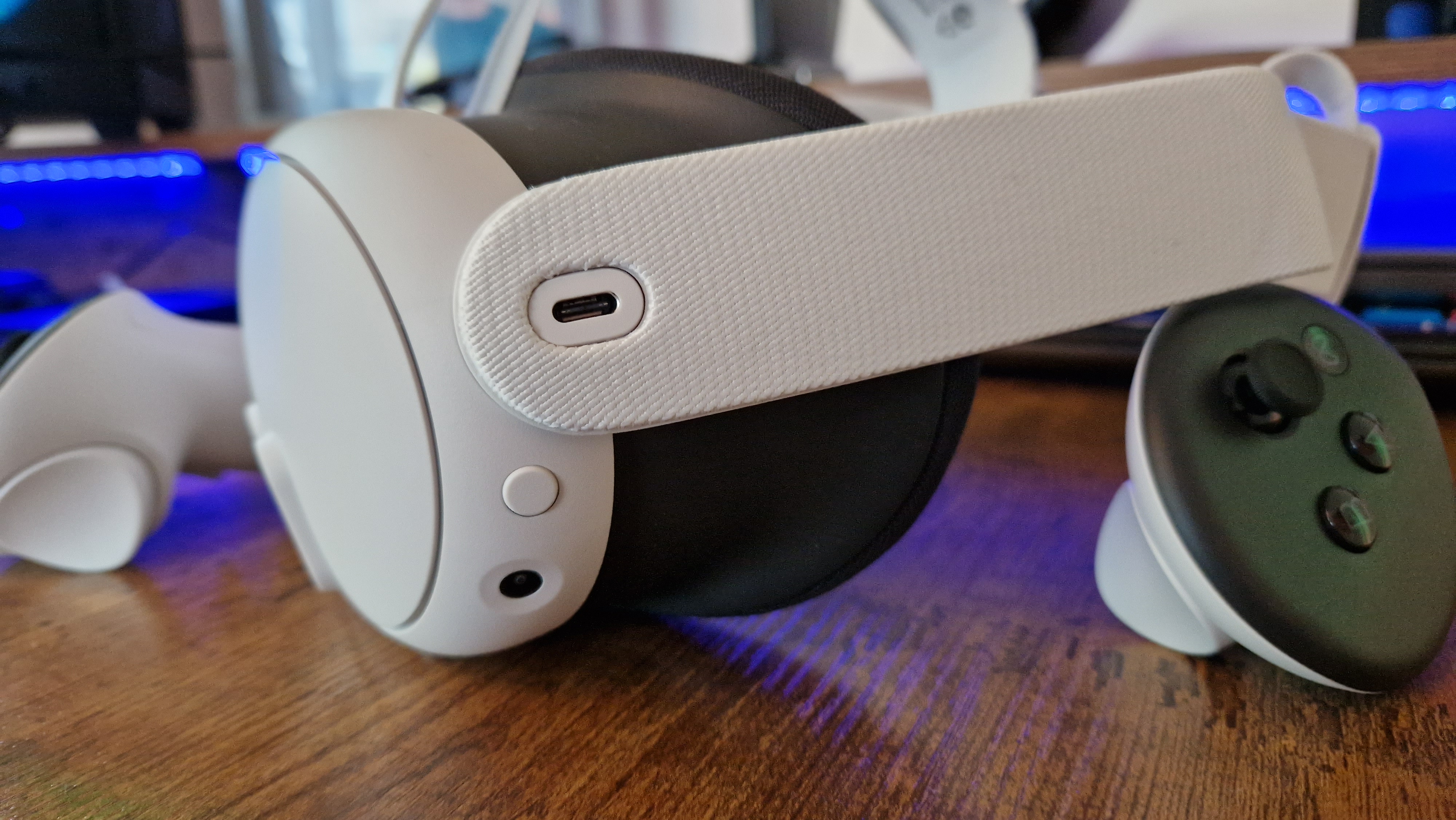
Annoyingly, there isn't any eye tracking on board, which does feel like a missing feature. Foveated rendering may have helped to provide more of a graphical leap from the Quest 2, and in terms of futureproofing, I'm interested to see how the Quest 3 survives without it. By all early accounts, the eye tracking of the Apple Vision Pro is said to be the stuff of legend.
The quoted battery life is 2.2 hours, which gives it around the same lifespan as the Quest 2. In practice, this is just ok. I don't usually tend to stretch out my VR gaming sessions more than an hour or so, and while the longevity of the onboard battery remains to be seen, this didn't feel like as much of a dealbreaker as the poor battery life of the Quest Pro. I did find that the battery met that quoted amount of time, and in an ideal world it'd last longer, but I feel as though people who want a longer battery life will probably invest in a charging stand or head strap with a battery pack. You can, of course, charge the headset while you play if you get a long enough right-angle cable.
Performance
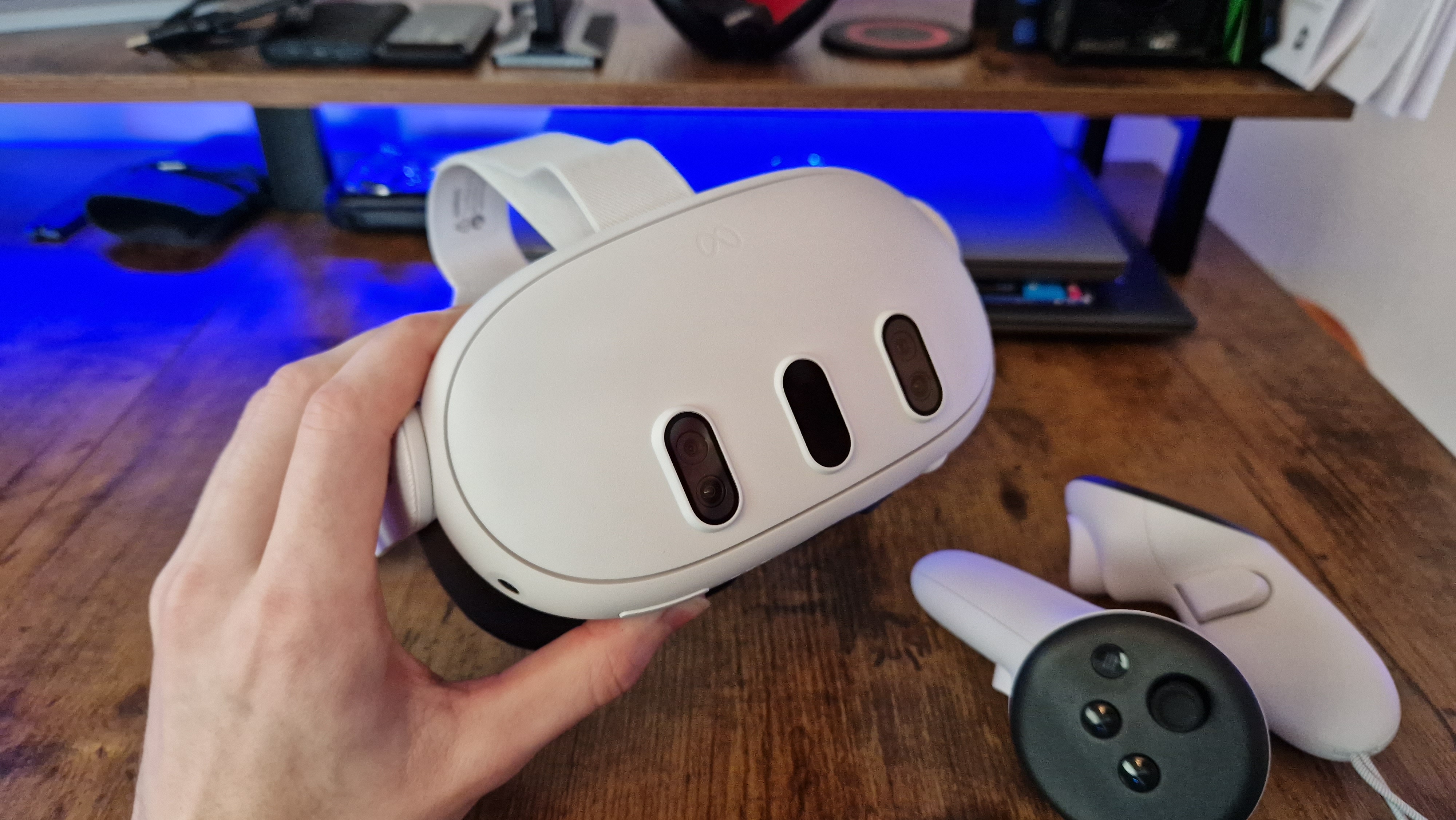
Like the Quest 2 before it, the Meta Quest 3 is an excellent device for VR gaming. To start with, and to PSVR 2's detriment, the Quest 3 is fully backwards compatible with Quest 2 games. That gives you access to hundreds of VR games, and probably the strongest all-round VR gaming library there is - short of owning one of the best gaming PCs. Admittedly, very few games made directly for the Quest 3 are available at launch, but the backwards compatibility absolutely softens that blow, and I hope Sony takes note.
You now have the added option to play many of those games in fully immersed VR, or in mixed reality, as games can integrate their key visuals into your surroundings, meaning more safety and perhaps less feelings of nausea. Thanks to those high-clarity passthrough cameras, room tracking is on par with PSVR 2, making it up there with the quickest and best no-fuss room tracking headsets on the market. I even tested this by playing in different lighting conditions, in different rooms, and with different colored floor surfaces. Quest 3 never failed to warn me if I was getting close to my guardian boundary. In fact, going forward I might even turn down its warning sensitivity because it can be a tad intrusive at its out-of-the-box setting.
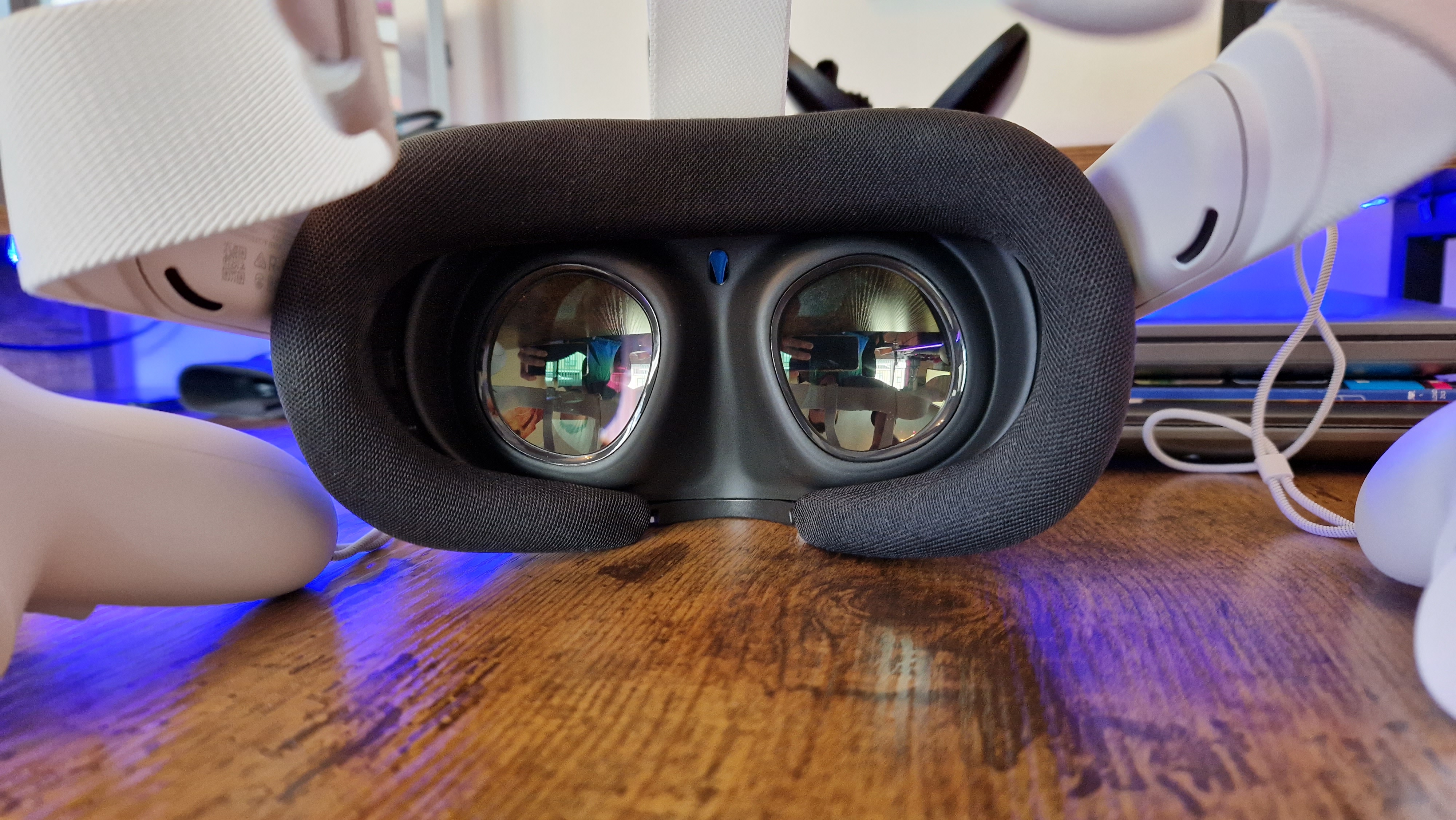
Whether it was playing tennis in VR, fixing up a vehicle in Car Mechanic Simulator, or roleplaying like John Wick in Pistol Whip, Meta Quest 3 always gives me a coherent VR experience. The star of the show for me has to be its 3D sound. Going between the Black Magic level in Pistol Whip on Quest 3 and Quest 2, you notice a quite astounding difference in the level of audio quality. The speakers on Quest 3 are more powerful, much more accurate, and just insanely balanced. They convey positional audio really well too, and manage to show a difference between reverb and condensed sound without blasting your eardrums.
Although I didn't personally notice a big difference in the visual fidelity from Quest 2 to Quest 3, I will say that one of the biggest improvements comes from those Pancake lenses. Your area of focus, ie, the sweet spot where parts of the display don't go blurry, feels gargantuan compared to Quest 2. It made playing Walkabout Mini Golf an absolute breeze, because I could hold my very precise putting line in my mind's eye as I squared up to the ball to take a shot. All the while, the ambient sound of a xen Japanese garden played calmingly in the background.
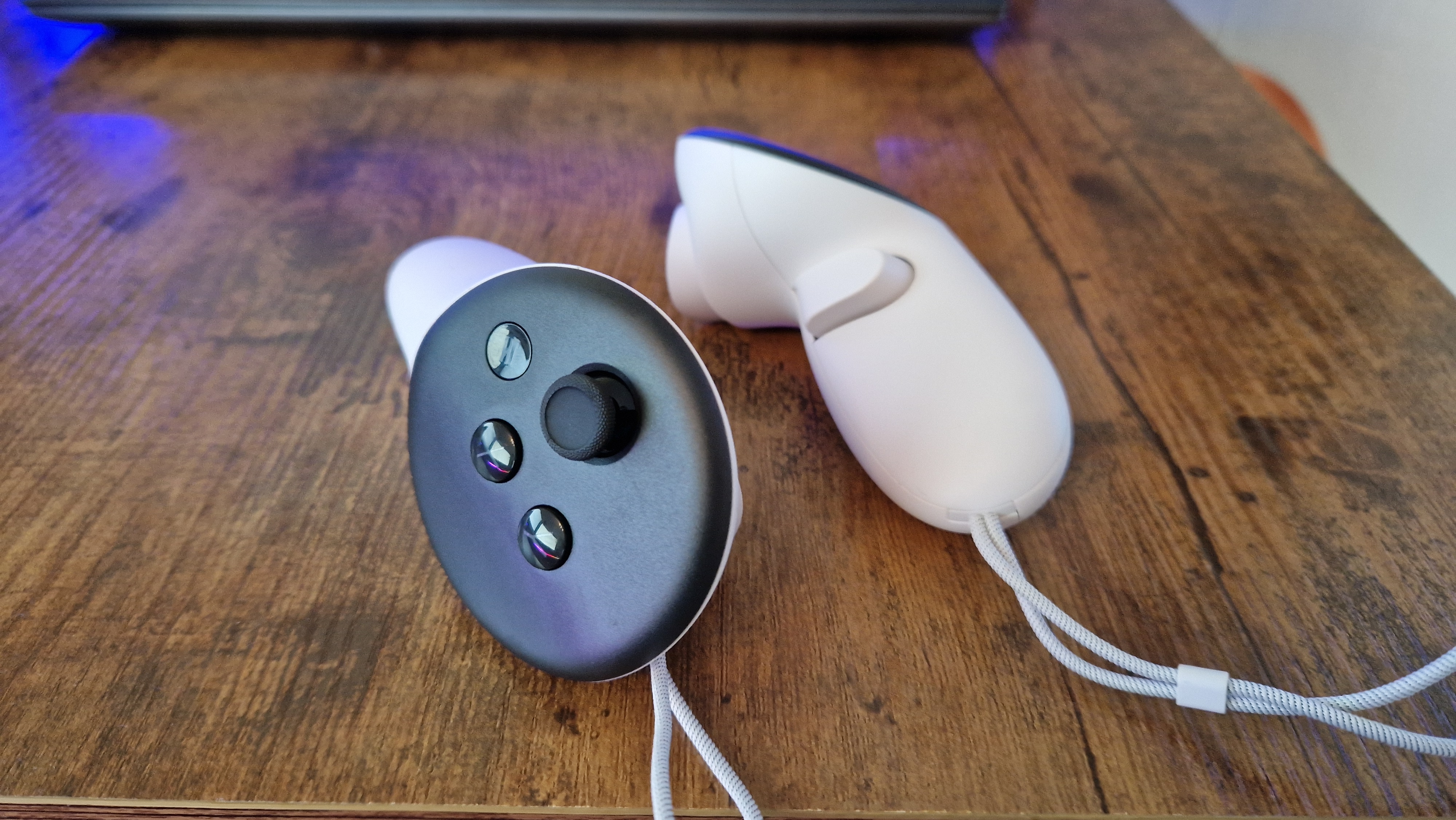
The haptic feedback in the controllers is as good as it's ever been, and although they might not feel all that different from the Quest 2, it's still precise and helps to ground you in experiences like Dungeons of Eternity. In that game, you can parry enemies by holding your controller at the right angle for your axe or sword to deflect an incoming blow. Feeling a satisfying *clink* that lets you know your parry has shielded you is immersive as anything, and the controllers can take all the credit. In the same vein, guns in Drop Dead: The Cabin feel chunky and powerful. While I wouldn't say these controllers are as good as PSVR 2's they do a great job when gaming.
I just wish that the designers would have abandoned the circular heads of these controllers when they put the tracking ring to the wayside. A lot of the time in games like Out of Scale, my thumbs just feel out of place and inaccurate to my in-game character because of how bulky the controller top now feels.
Privacy
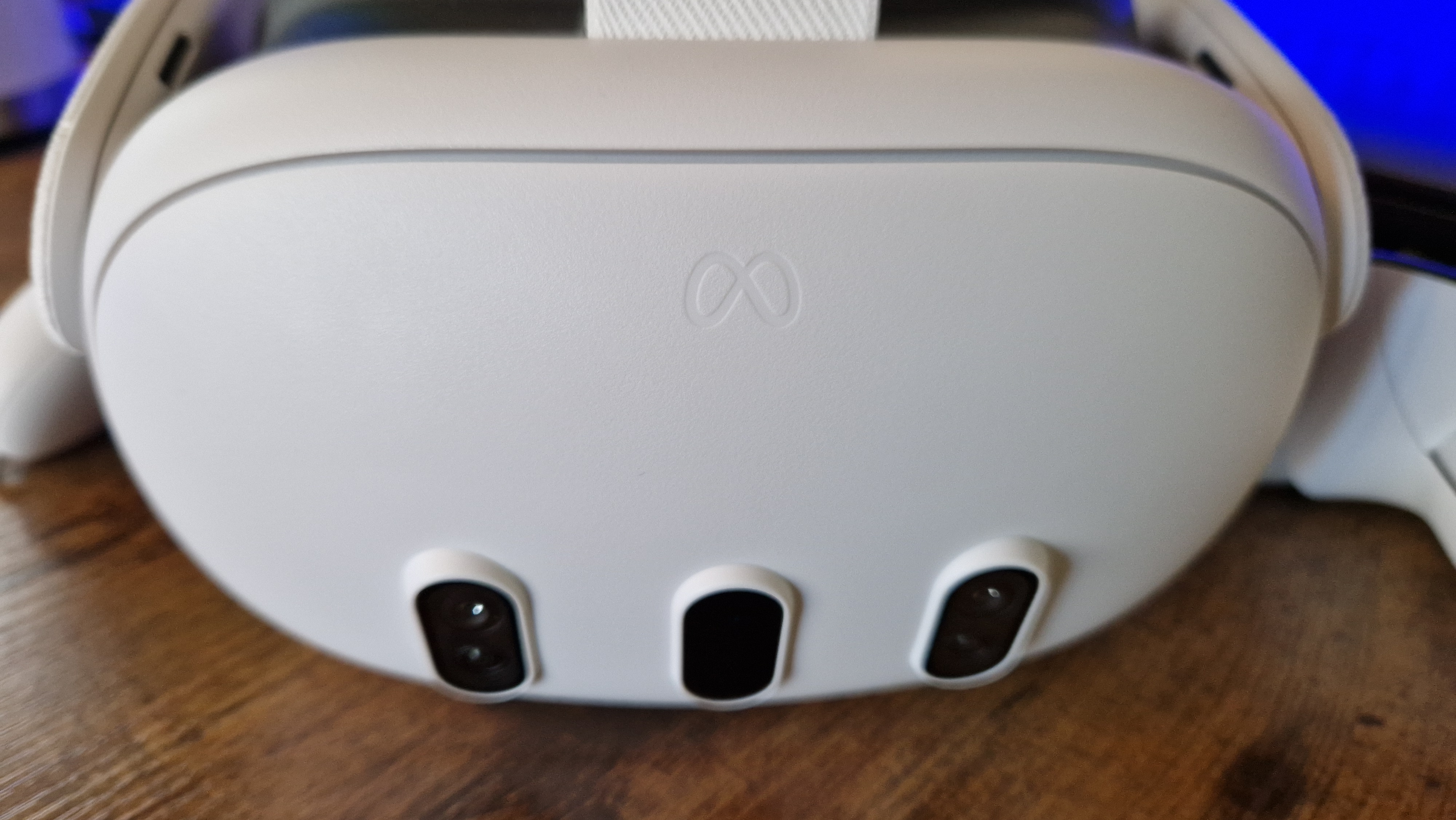
Social Media is still a relatively new technology. It is a little mad to think that such an established part of humanity's way of life only started properly appearing about 20 years ago. Its growth was exponential, and that meant that by the time it was a dominant force in society, its monetization structure was already established - it had gone through its formative years highly unregulated.
I bring that up because with Apple and Meta now deciding for us that the "age of Spatial Computing" is beginning, it very much feels as though we are at a crossroads with how mixed reality will be integrated into our society. For that reason, I do think it's important to keep the data mining and monetization structure Meta has established for its social media platforms in check now. If we are willing to accept Meta's established track record as a cost of entry to "cool new technology", we send a message to these companies that it is something we approve of, and suddenly the possibility of another Cambridge Analytica-sized crisis in the next ten years grows.
When I reviewed the Meta Quest Pro, I wanted to see if gamers could dodge the Metaverse inside it if they simply wanted a more refined and polished VR gaming experience than the Quest 2 could offer them. Myself and other reviewers were definitely left wanting in that regard, and although the Metaverse is seeing a resurgence thanks to the Quest 3's mixed-reality chops, I will be the first to admit that the Quest 3 is an enormous improvement. With every app that opens, you are asked for the specific permissions to the data that will be recorded, and on the whole, the reasons for that data collection seem much more transparent and rooted in what an application needs in order to work.
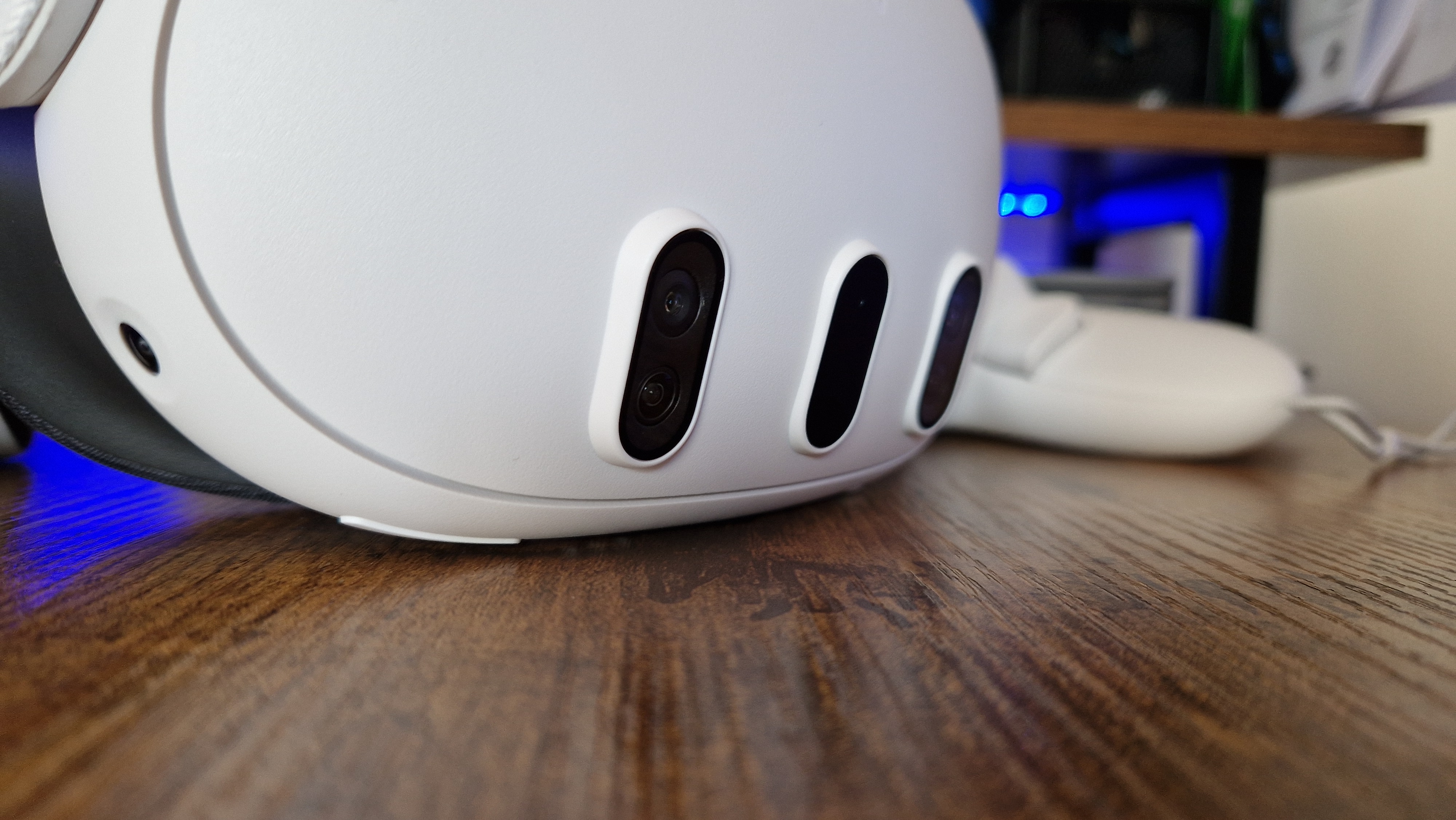
This is a mixed-reality headset, but it doesn't seem to exist solely for to get you into the Metaverse. I hope future software updates don't change this, but at least for now, if you just want to use the Quest 3 as a gaming device, you absolutely can.
Anecdotally, nothing personifies this more than when you switch on the headset. Zuck's bizarre futuristic treehouse you spawn into on the Quest 2 and Quest Pro is kicked into touch in lieu of the clear passthrough cameras that show you your surroundings instead. Sure, if you want to spawn into the generic VR treehouse, which is now surrounded by a 30th-century city that looms in the distance, you can. Although I wouldn't want to, especially when the mirror reflection of your Meta avatar still stands to your right.
I never did create one of those, though, so the cursed little grey alien is what appears in the mirror for me and it is sheer nightmare fuel.
Now, just like with the Quest Pro review, I cannot state factually that Meta is or is not collecting personal data based on your use of the headset. I'll leave it up to you if you are comfortable with that possibility - because based on Meta's track record, I'd say it is a possibility. What I can say for certain is, based on my time with the Quest 3, I haven't had any of the ominous targeted ads about whatever I left the headset looking at - which did happen with the Quest Pro.
Should you buy the Meta Quest 3?
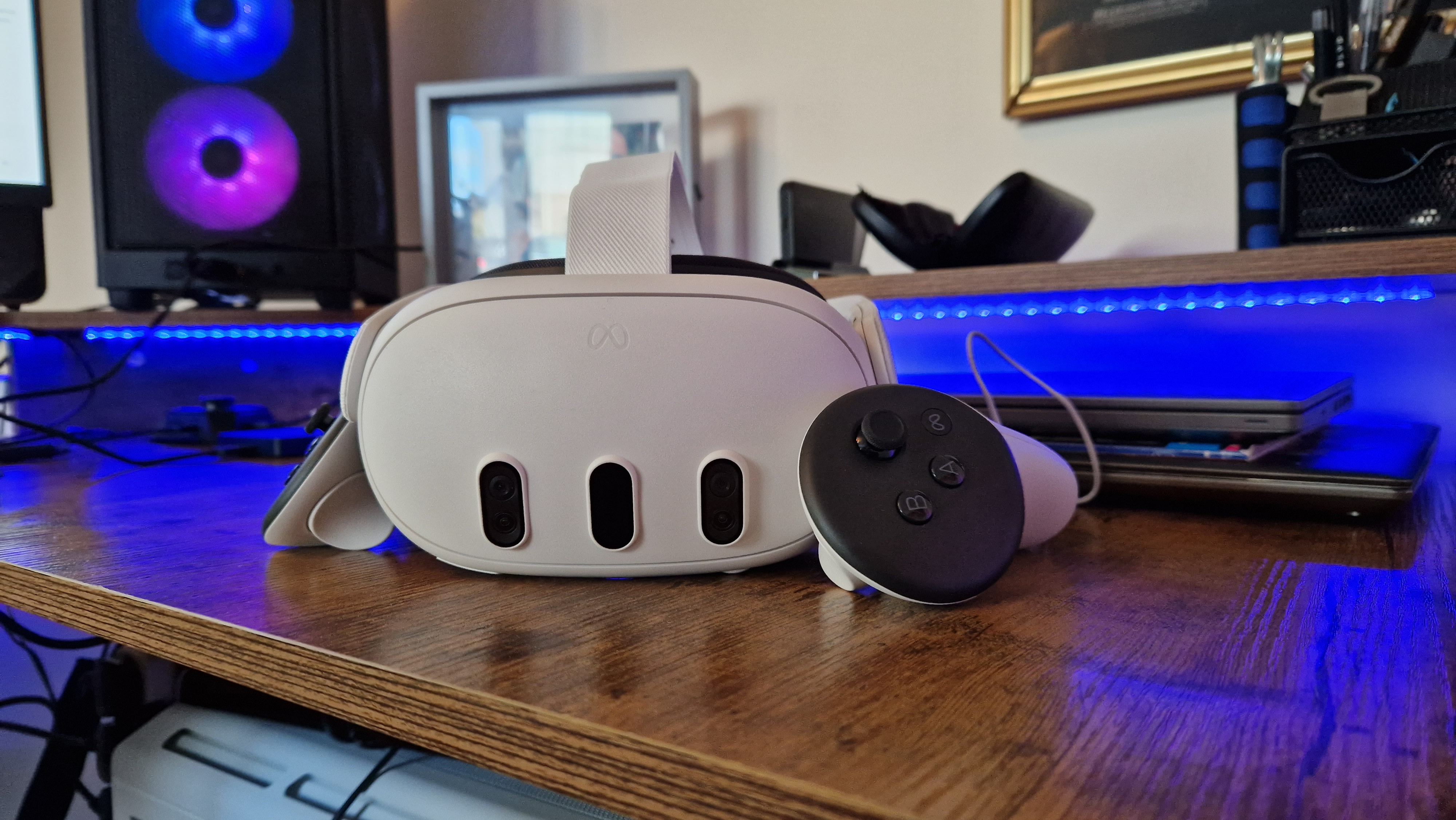
Overall, the Meta Quest 3 takes the excellent gaming chops of the Oculus Quest 2 and gives it a current-gen mixed reality refresh. In 2020, Quest 2 set the bar for VR devices in the current market, and its successor does a great job of raising that bar for standalone headsets. It's easy for me to recommend the Meta Quest 3 as a gaming device, and although its spatial computing isn't for me, the privacy issues here don't seem nearly as bad as they did with the Quest Pro.
I do want to note though, that while it's easy for me to recommend the Quest 3, I don't think the Quest 2 is now obsolete. To me, it very much depends on what you're looking for in a VR device. If you want some light gaming, if you want to dip your toe in the virtual water, or if you've never owned a VR headset before, a Quest 2 is still going to give you the brilliant experience it always has. Moreover, it's a very affordable VR headset - which, to this day, still sounds like an oxymoron.
If you feel your Quest 2 beginning to age, or you want the enthusiast-level mixed-reality features, the Quest 3 is the one to go for. It does improve upon what came before but still feels like a member of the family.
Is it the best VR headset for gaming on the market? In my opinion, I think PSVR 2 still edges the race because it has even more high-end features that offer more value for money. Then again, the Quest store has more games to experience, and you don't need a console for it to work. That race is a photo finish, but with Apple set to run next, this generation of VR is heating up.
How we tested the Meta Quest 3
I put the Meta Quest 3 to the test over the course of the last week. During that time, I've played games in lots of genres, both in mixed reality and in fully immersed VR. I've also used the headset in multiple rooms, in varying lighting conditions, and with different surroundings. I've played mainly in standing mode with a room-scale boundary, although for some games I played sat down with a stationary boundary when I was feeling particularly lazy.
To test the battery life, I ran the headset down from a full charge, getting around the quoted lifespan of just over two hours on a single charge. It's worth noting that I only used the standard headstrap and facial interface that came with the headset, and I tried using the headset both with and without my fairly thick-framed glasses.
The headset I've had the pleasure of testing is the 512GB model, which was provided to me by Meta.
To hear more about the ways we test the latest technology here at GamesRadar+, take a look at our Hardware Policy.
Are you ok with our own reality for now? Take a look at the best gaming chairs, the best gaming desks, and the best gaming TVs.
One of my earliest memories is playing SuperMario64 and wondering why the controller I held had three grips, but I only had two hands. Ever since I've been in love with video games and their technology. After graduating from Edinburgh Napier University with a degree in Journalism, I contributed to the Scottish Games Network and completed an Editorial Internship at Expert Reviews. Over the last decade, I’ve been managing my own YouTube channel about my love of games too. These days, I'm one of the resident hardware nerds at GamesRadar+, and I take the lead on our coverage of gaming PCs, VR, controllers, gaming chairs, and content creation gear. Now, I better stop myself here before I get talking about my favourite games like HUNT: Showdown, Dishonored, and Towerfall Ascension. Location: UK Remote
